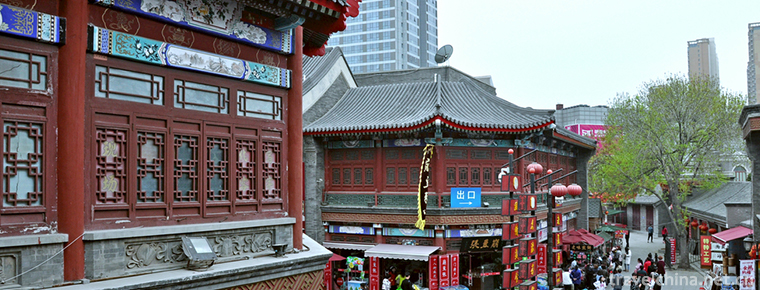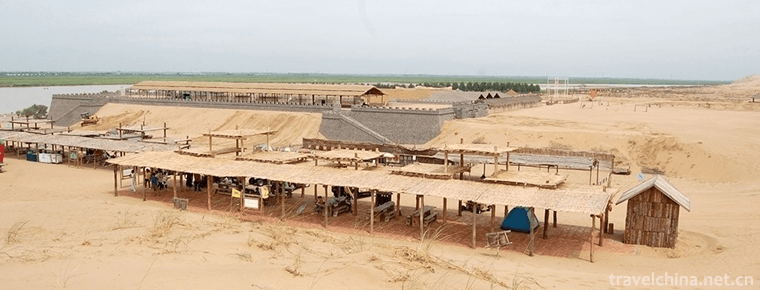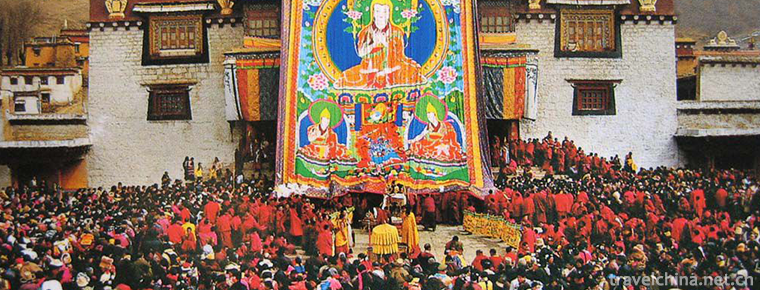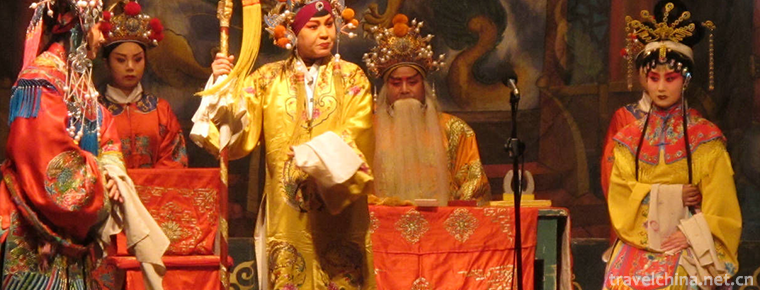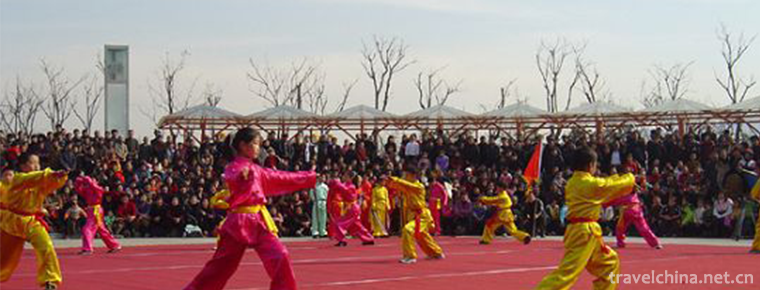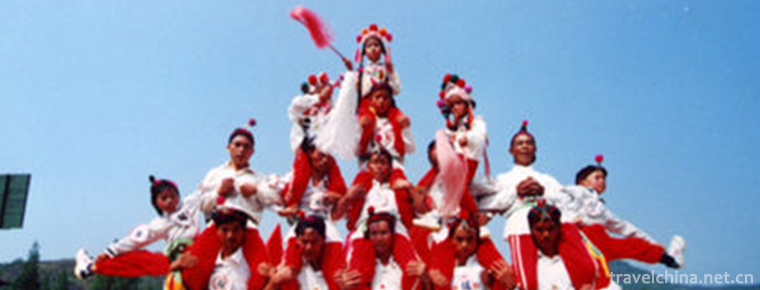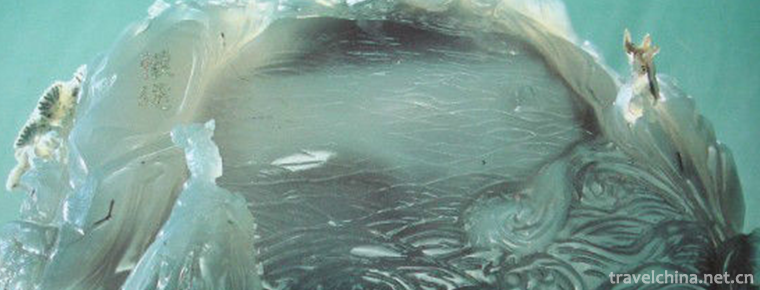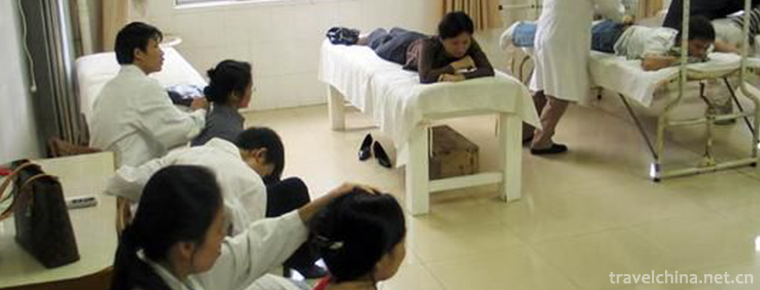Making Skills of Filament Mosaic
Making Skills of Filament Mosaic
Silk mosaic is one of the traditional handicraft techniques in China. Gold, silver and copper are drawn into silk, and various decorations such as jewelry and utensils are made by various techniques.
On June 7, 2008, filament mosaic technology was approved by the State Council and listed in the second batch of national intangible cultural heritage list.
Technical history
Dachang Hui Autonomous County, which belongs to Langfang City, Hebei Province, is endowed with unique geographical advantages, resulting in the birth, inheritance and development of filament mosaic technology in Dachang.
Dachang filament mosaic technology can be traced back to the Han Dynasty. From the decorative boxes unearthed from the ancient tombs of Zhaojiagou, filament mosaic technology has begun to emerge. The Persians in Ming Dynasty moved northward with Emperor Yongle and settled in large factories. They brought traditional Persian patterns and handicraft. They combined with the local filament mosaic technology to raise the filament mosaic production technology to a new level. The filament mosaic in the Ming and Qing Dynasties was designated as a special supply. Mr. Ma Wenlao (late), the most influential master of Mongolian stone inlay, is well-known for producing "Potala Palace Model" and "Golden Seal of the Twelfth Panchen" with his disciples.
Silk, in the Shang Dynasty bronze casting era has appeared concave and convex "silk" pattern. In the Han Dynasty, the golden silk knitting (Hazel Jade Clothes) was formed, and there were very detailed, exquisite and complete mosaic works of flower silk. Embedded, in the Spring and Autumn Period and the Warring States Period, there have been glazed inlay and jade inlay, to the Northern Qi Dynasty has been quite exquisite and perfect. Gold jewelry shines brightly, silk embedding is gorgeous, exquisite and unique. The filament mosaic technology was highly developed in the Tang Dynasty. The technology has reached a fairly skilled level, which can be said to be fascinating. By the Qing Dynasty, the technology had been further improved and developed.
Dachang filament mosaic is a traditional pure handicraft product in China. Its process is extremely complex. It needs to go through many processes, such as design, blanking, tire making, drawing, drawing, wire making, wire bonding, welding, shaping, washing, stone selection, bonding, combination, gold plating and silver plating. Because it is hand-made, high-quality materials, so each process must be operated by a dedicated person, the craftsman checks, a product will take a lot of energy and time to complete.
Dachang filament mosaic is lifelike in shape, complex in design, exquisite in production and high in technology. It combines the religious, cultural and aesthetic factors of multi-dynasties and multi-nationalities, and forms unique traditional handicraft and modelling features. It is unique in Chinese arts and crafts circles and has high aesthetic value.
Most of the filament mosaic techniques in Dachang were handed down solely by father and son, and later by teachers and apprentices. The first generation has passed away, while the second generation has only 10 inheritors, all of whom are over 30 years old. In recent years, due to the shrinkage of the domestic and international traditional crafts market and the closure of many filament craft factories, technicians have lost confidence and enthusiasm in traditional crafts. The third generation of filament mosaic production technology is facing the danger of losing and dating. It is urgent to explore, rescue and protect filament mosaic technology.
Material heritage
Empress Fengguan of Xiaozhuang in Ming Dynasty, Jin Buyao in Qing Dynasty and Princess Li Li's tomb crown in Tang Dynasty... These exquisite royal jewelry are all made from a common craft, filament inlay. It can be said that a history of ancient Chinese royal jewelry is an evolutionary history of filament mosaic. As a royal stunt, filament mosaic is the first of the "Eight Wonders of Yanjing". In June 2008, filament mosaic technology was listed in the national intangible cultural heritage list. The Beijing-Tianjin-Hebei intangible cultural heritage exhibition is divided into five parts: sculpture, tie-painting, embroidery, piano, chess, calligraphy and painting, traditional medicine and performance competition. It includes nearly 70 items of traditional art, traditional skills, traditional medicine, traditional drama, traditional sports and recreation and acrobatics. Among them, there are 40 national representative projects, 17 provincial representative projects and 5 human intangible cultural projects. List of representative works of cultural heritage. The "Eight Excellent Skills of Yanjing" represented by cloisonne making, Beijing jade carving, lacquer carving, ivory carving, filament mosaic making and gold lacquer mosaic decoration, highlights the natural interest and magnificence of the royal court art of "Jing Zuo". Tianjin's non-heritage projects, such as Yangliu Qingmu New Year prints, clay figurines, kite Wei craftsmanship and so on, have brought a bustling market of "Tianjin Wei in the lower reaches of Jiuhe River". Hebei non-heritage projects, represented by Yuxian paper-cut, Cizhou kiln firing skills and Fengning cloth paste paintings, embody the simplicity and boldness of Yanzhao land
The filament inlaying technique, known as one of the "Eight Wonders of Yanjing", is an ancient Chinese royal jewelry inlaying technique, which is on the verge of being lost. The well-known jewellery enterprise Chaohengji Joint Public Welfare Organization "Action for Rare Defense" launched a project of "Rescuing intangible cultural heritage handicraft - filament craft" at Chaohengji Filament Museum in Shantou. The filament craft seminar was held at the same time. Four years later, more than ten silk craftsmen have assembled to make the Baohua Silk Wind and Rain Bridge in Zhenguan. It is reported that this is the largest and most complete silk craft treasure in existence. Recently, Sun Tzu's Art of War, a national intangible cultural heritage, was unveiled in Beijing. The work is handcrafted from 11800.5 grams of gold. On 45 pieces of gold slips, the whole content of "36 stratagems" is engraved with ancient Li Qi, which shows the extensive and profound military and cultural heritage of China.
Inheritance and development
Ten people, such as Ma Fuliang, a national representative successor of filament mosaic, Zhao Deping, a peasant artist rooted in the countryside, and Lei Feng of Langfang, won the appraisal of "Ten Top News Personalities" in Langfang. Liu Jinlu, Zhang Lei, volunteers of Huahang Airlines, who devoted themselves to charity and public welfare, were appraised as "the top ten people who moved Langfang".
A silk-inlaid gold bracelet sample, which was popular in Beijing more than 20 years ago, appeared on a non-hereditary hand in Dongcheng District yesterday. Ma Xiufeng, 58, a non-hereditary person, was the designer and producer of the bracelet. "This Bracelet looks a bit clumsy now, but in the 1980s and 1990s it was a trendsetter." Ma Xiufeng recalls
Superb skills
Filament craftsmanship is particularly "luxurious"
According to Fang Wei, there are many kinds of fine work of gold and silver, among which there are many kinds. Take filament mosaic as an example. The filament process, also known as fine gold process, is to draw gold, silver and copper into fine wires, and then build fine wires into jewelry or works of art by relying on eight major processes: stacking, base, weaving, knitting, pinching, filling, saving and welding. Among them, each process is subdivided into thousands of changes, and the final shape pattern varies endlessly according to the style of the designer. Mosaic is to make gold and silver sheets into utensils or patterns, and in which gems are embedded. Filament inlay, rare materials, complicated procedures, all rely on manual production, so this process of jewelry, history has always been used by the royal, it can be called one of the characteristics of traditional luxury goods in China. Even in today's advanced science and technology, it is quite difficult to make a silk craft jewelry. To build a bracelet, the fastest time is 7 days.
Contrast of Skills
Several judges said that compared with previous contests, the works of this contest are closer to life, and many creative works are eye-catching. The design quality has been greatly improved, with outstanding personality, rich connotation and changeable cultural elements.
"We see a lot of Chinese elements in the works, which are combined with the world trend and impressive," said Zou Ningxin, head of jewelry design department of Beijing Fashion College. Dragon, Facebook, Chinese knot and blue and white porcelain all explain the designer's unique understanding of classical culture. In addition, natural beauty, scenic spots and historic sites, Abstract concepts, literal symbols, and even geometric figures are introduced into the creative prototype.
Judges from jewelry companies say that the new generation of jewelry consumers attach more importance to the cultural value and spiritual experience of jewelry and pursue its uniqueness and uniqueness. Judges found that the design of this work is closer to consumer demand.
Li Hui, the host of Phoenix Satellite TV's Complete Fashion Manual, feels that the works of this contest are more design and creative than those of previous years. "One of the works is called"Buddha in the Heart". The jewelry is hollow in the middle, and the artistic conception comes out."
Bai Jingyi, the inheritor of the national cultural heritage filament inlay craft, saw many bright works of filament inlay in the entries. "From this point of view, the competition has played a great role in promoting the inheritance of traditional craft .
The works of the professional group are more stable and heavy. Some designers combine the arch bridge and the moon as necklaces. Others make necklace rings for the Great Wall and the Forbidden City to represent their understanding of the "Chinese seal".
"Their designs are simple, generous and bold, which are more distinctive than previous works," Guo Ying, vice president of Jewelry College of China University of Geosciences, said in evaluating the works of the student group.
Their inspiration may come from childhood memories, or a picture, or even an animated cartoon from childhood. One designer combines the words "father" and "mountain" into a necklace to explain the deep love of "father like mountain". Another author uses the prototype of jumping house to create a pendant to miss the beautiful childhood.
Inheritance significance
"Filament inlay" can be called the most exquisite in metal technology. The filaments are made of gold, silver and copper as raw materials, using pinching, filling, saving, welding, knitting, stacking and other techniques, and inlaid with frustration, radium, thumping, stuffing, beating, collapse, extrusion and inlaying techniques to make metal sheets into brackets and claw-shaped grooves, and then inlaid with pearls and gems. This process, on the one hand, makes the three-dimensional shape of jewelry more vivid by the fine processing of raw materials, on the other hand, makes gold and silver itself soft and light, refined and restrained, and is more suitable to set off the warmth and brightness of jade and gemstone in the mosaic process. Because of its complex technology and near loss, it is very rare to use filament inlay technology to inherit jewelry in the market.
It is a combination of filament and mosaic. The filament is made of gold, silver and copper as raw materials, and traditional techniques such as pinching, filling, saving, welding, knitting and stacking are adopted. The metal sheets are made into brackets and claw-shaped grooves, and then inlaid with pearls and precious stones by means of frustration, radium, thumping, stuffing, beating, collapse, extrusion and inlaying. The so-called "silk woven gold crown, wonderful hand inlaid with the universe", is a high degree of summary of this exquisite craft.
Pass on generation after generation
Filament mosaic fireworks passed down from generation to generation
In the filament mosaic studio of Chaohengji (002345, stock bar) Filament Museum in Shantou City, Guangdong Province, the apprentice made a final inspection of "Silk and Gemstone as You Like".
The filament mosaic technology, also known as "fine gold technology", is a traditional Chinese court art and one of the "Eight Excellents of Yanjing". Its technology is complex and cumbersome, and the big technology is divided into eight kinds: pinching, filling, saving, welding, stacking, stacking, weaving and knitting. In 2008, filament mosaic technology was formally included in the national intangible cultural heritage list.
Speaking of filament, Yao Yingchun, the national successor of jacquard filament technology, was a craftsman in Beijing filament mosaic factory. He began to work on filament technology mosaic at the age of 17. He is 72 years old. He is still teaching in the "filament mosaic studio" of Chaohongji Filament Museum to train successors of filament technology. The filament mosaic technology requires high manual skills and experience, and the time to train a skilled master is more than ten years and decades. Therefore, many young apprentices hesitate, and the inheritance of skills is facing a severe test. Yao Yingchun has more than 30 apprentices.
Lu Zhenwei, an apprentice of the post-90s generation, has been studying in the filament mosaic studio for nearly five years. "Nowadays, very few young people can settle down to do the delicate work of filament." Lu Zhenwei said, "When I touch the filament, I am shocked by its beauty, and I like it very much at first sight." Lu Zhenwei has been able to complete relatively small parts independently, and most of the time he is still learning crafts from his teacher, "It is estimated that it will take another five years to complete a finished product alone, and there are too many things to learn from Master Yao Yingchun".

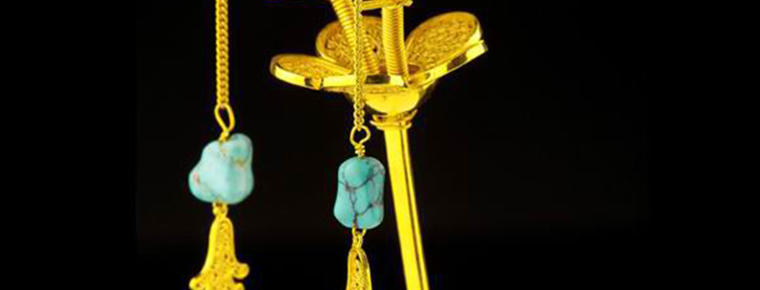
-
Tianjin Ancient Culture Street Tourist Area Jinmen Hometown
Tianjin Ancient Culture Street is located outside the east gate of the northeast corner of Nankai District of Tianjin City and on the West Bank of Haihe River.
Views: 223 Time 2018-11-24 -
Yashan Huahai Stone Forest
Yashan Huahai Stone Forest Tourist Area, located in Nanling County, Wuhu City, Anhui Province, is one of the important scenic spots in Anhui's "two mountains and one lake" tourism economic c.
Views: 160 Time 2018-12-20 -
Huang Sha ancient ferry
The original eco-tourism scenic spot of Huangsha Gudu is one of the eight scenic spots of Ningxia in Ming and Qing Dynasties, including the national AAAA-level tourism scenic spot, the National Wetlan.
Views: 144 Time 2019-01-18 -
Tibetan New Year
Tibetan calendar year is the traditional festival of the Tibetan people. Bhutan and Mongolia, which are deeply influenced by Tibetan culture, also celebrate the Tibetan New Year.
Views: 190 Time 2019-04-04 -
Firing Techniques of Fengxi Porcelain
Fengxi Porcelain Firing Technology, a local traditional technology in Fengxi District, Chaozhou City, Guangdong Province, is one of the national intangible cultural heritage..
Views: 770 Time 2019-04-29 -
Heyang jumping drama
Heyang Dance Opera is a kind of local opera in Heyang County, Shaanxi Province. It belongs to the nature of social opera. When performing, there is no singing voice,.
Views: 368 Time 2019-05-02 -
Meishan Wushu
Meishan Wushu is a traditional school of Wushu which is spread in Hunan Province. Xinhua is an ancient and magical land. It has not only nurtured many historical celebrities, but also cultivated Meish.
Views: 110 Time 2019-06-03 -
Ying Luohan
Yingluohan is a form of traditional folk entertainment which integrates martial arts and folklore in the traditional festival activities in Jinyun County, Zhejiang Province. This kind of activity also.
Views: 130 Time 2019-07-14 -
Jade carving
Jade carving is one of the oldest carving varieties in China. Jade carved into exquisite crafts, known as jade carving. Craftsmen in the production process, according to the natural color and shape of.
Views: 343 Time 2019-07-16 -
Bone setting therapy of traditional Chinese medicine
Bone-setting, traditional Chinese medicine refers to the treatment of fracture, dislocation and other diseases by pushing, pulling, pressing and pressing. Orthopaedics, as a specialty name, is a speci.
Views: 293 Time 2019-08-10 -
Neijiangs location
Neijiang City is located in the southeast of Sichuan Basin and the middle of the lower reaches of Tuojiang River. Chongqing in the East, Chengdu in the west, Zigong, Yibin and Luzhou in the south, Ziyang and Suining in the north. Its geographical location.
Views: 339 Time 2020-12-16 -
Meishan scenic spot
Meishan has a long history and culture and many cultural relics. Meishan County, where the municipal government is located, has a history of 1505 years. It is a famous town of Sansu culture. There are 2 provincial cultural relics protection unit.
Views: 338 Time 2020-12-18
